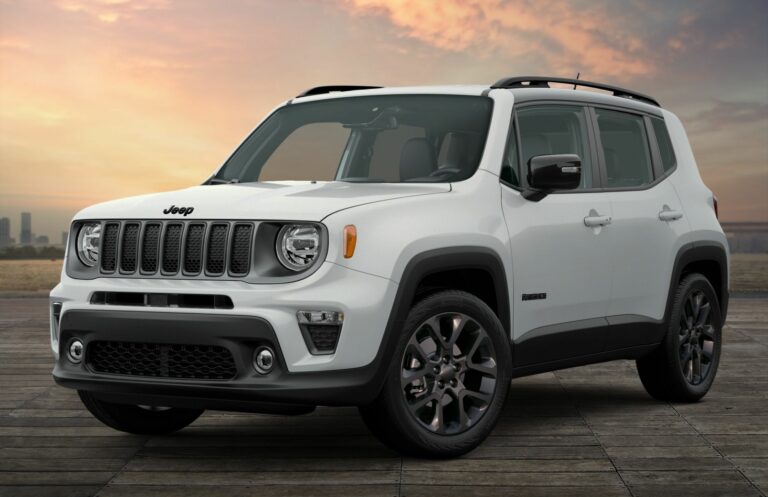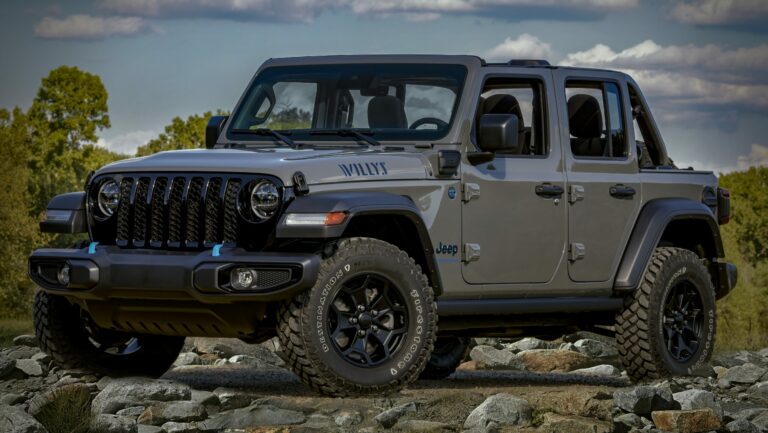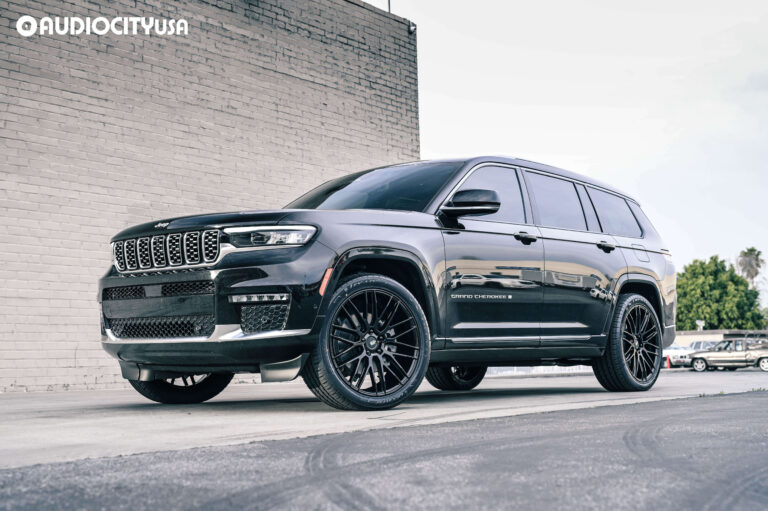Jeep With 4.0 Engine For Sale: A Comprehensive Guide to Owning a Legend
Jeep With 4.0 Engine For Sale: A Comprehensive Guide to Owning a Legend jeeps.truckstrend.com
Introduction: The Enduring Legacy of the Jeep 4.0L Inline-Six
In the vast landscape of automotive history, few engines have achieved the legendary status of the Jeep 4.0-liter inline-six. More than just a power plant, it became the beating heart of an era of Jeeps synonymous with rugged reliability, straightforward mechanics, and unparalleled off-road capability. From the iconic Cherokee XJ to the beloved Wrangler TJ, the 4.0L engine transformed these vehicles from mere modes of transport into cultural icons and workhorses revered by enthusiasts and casual drivers alike.
Jeep With 4.0 Engine For Sale: A Comprehensive Guide to Owning a Legend
Today, the search for a "Jeep with 4.0 engine for sale" isn’t just about finding a used car; it’s about investing in a piece of automotive heritage that continues to deliver exceptional value, performance, and a unique driving experience. This comprehensive guide will delve into what makes the 4.0L so special, what to look for when buying one, and how to ensure your piece of history continues to thrive on and off the beaten path. If you’re considering joining the ranks of proud 4.0L Jeep owners, this article is your essential roadmap.
The Legend Under the Hood: Understanding the Jeep 4.0L Engine
The 4.0L inline-six engine, officially known as the AMC 242 (referring to its 242 cubic inch displacement), was a masterpiece of engineering simplicity and durability. Originally designed by American Motors Corporation (AMC) and later produced by Chrysler after the acquisition, this engine powered various Jeep models from 1987 until 2006.
Key Characteristics:
- Inline-Six Configuration: Its straight-six design provides inherent balance and smoothness, reducing vibrations.
- Cast Iron Block and Head: Overbuilt for strength and longevity, contributing to its legendary toughness.
- Pushrod Design: While seemingly old-fashioned, this contributes to its simplicity, ease of maintenance, and strong low-end torque.
- Port Fuel Injection: Evolved from Throttle Body Injection (TBI) to Multi-Port Fuel Injection (MPI) over its lifespan, improving efficiency and power.
- Torque Monster: Known for its ample low-end torque, making it ideal for off-road crawling and towing.
![]()
Models It Powered:
- Jeep Cherokee (XJ): 1987-2001 (arguably its most famous application).
- Jeep Wrangler (YJ): 1991-1995.
- Jeep Wrangler (TJ): 1997-2006.
- Jeep Grand Cherokee (ZJ): 1993-1998.
- Jeep Grand Cherokee (WJ): 1999-2004 (less common, often replaced by V8s in later years).


The 4.0L’s reputation for being "bulletproof" stems from its robust construction, relatively low compression, and a design that prioritizes reliability over cutting-edge technology. This translates into an engine that can withstand significant abuse and rack up hundreds of thousands of miles with proper care.
Why Buy a Jeep with the 4.0L Engine? Unpacking the Benefits
The allure of a 4.0L Jeep extends far beyond nostalgia. For many, it represents the ideal blend of classic utility and practical ownership.
- Unrivaled Reliability and Longevity: The primary draw is its legendary durability. It’s not uncommon to find 4.0L engines with 200,000, 300,000, or even 400,000+ miles still running strong. With basic maintenance, these engines are incredibly resilient.
- Simple Maintenance and Repair: Thanks to its straightforward design, the 4.0L is relatively easy to work on for the average DIY enthusiast. Parts are widely available and often inexpensive, making repairs less daunting than with more complex modern engines.
- Abundant Aftermarket Support: Due to its popularity and long production run, the aftermarket industry for 4.0L Jeeps is enormous. From performance upgrades to heavy-duty off-road components, you can find virtually any part or modification imaginable.
- Excellent Off-Road Prowess: The inline-six delivers robust low-end torque, which is crucial for tackling challenging off-road terrain. This makes Jeeps equipped with the 4.0L highly capable rock crawlers and trail conquerors.
- Cost-Effectiveness and Value Retention: Generally, these Jeeps are more affordable to purchase than newer models. Their reputation for reliability and the passionate enthusiast community ensure they hold their value remarkably well, often appreciating if well-maintained and modified.
- Strong Community and Knowledge Base: Owning a 4.0L Jeep means joining a vast, supportive community. Online forums, local clubs, and social media groups offer a wealth of knowledge, troubleshooting tips, and camaraderie.
Navigating the Market: How to Find Your Ideal 4.0L Jeep
Finding the right 4.0L Jeep requires patience and knowing where to look. The condition and price can vary wildly, so a strategic approach is key.
Where to Look:
- Online Marketplaces: Facebook Marketplace, Craigslist, and dedicated automotive classifieds (e.g., AutoTrader, Cars.com) are popular starting points.
- Jeep-Specific Forums and Classifieds: Websites like JeepForum.com, CherokeeForum.com, and WranglerForum.com often have "for sale" sections where enthusiasts sell their well-maintained vehicles.
- Local Dealerships (Specializing in Used/Classic): Some smaller dealerships or used car lots might have older Jeeps, though prices can be higher.
- Auctions: Government surplus or public auto auctions can sometimes yield hidden gems, but they often come with higher risk.
- Word-of-Mouth: Let friends, family, and local mechanics know you’re looking.
Defining Your Needs:
- Cherokee XJ: Great for a versatile daily driver, family vehicle, or overland build. Unibody construction means less frame rust, but body rust can be an issue.
- Wrangler YJ/TJ: The quintessential open-air Jeep experience, perfect for dedicated off-roading or summer cruising. Body-on-frame construction, so check the frame meticulously for rust.
- Grand Cherokee ZJ/WJ: Offers more comfort and luxury while retaining significant off-road capability. Often a good value, but check for common Grand Cherokee issues alongside engine specifics.
- Budget: Determine your maximum spend, considering potential immediate repairs or desired modifications.
- Intended Use: Will it be a daily driver, weekend warrior, dedicated trail rig, or project car? This will influence the level of wear and tear you’re willing to accept.
What to Ask the Seller:
- Maintenance Records: The holy grail. Detailed records indicate a cared-for vehicle.
- Reasons for Selling: Provides insight into potential hidden issues.
- Known Issues/Repairs: Ask about any current or past problems, especially those common to the 4.0L.
- Modifications: Understand what has been changed and if it was done professionally.
- Rust: Inquire about rust, especially on the frame (Wranglers) or rocker panels/floorboards (XJs).
- Mileage: While 4.0Ls last forever, higher mileage might mean more wear on other components.
Crucial Considerations Before You Buy: Inspection & Due Diligence
Even with the 4.0L’s reputation, no used vehicle is without potential issues. Thorough inspection is paramount.
Common 4.0L Engine Issues (and What to Look For):
- Rear Main Seal (RMS) Leaks: Very common. Often not a severe leak, but a persistent drip. Look for oil on the bell housing or ground. Repair involves dropping the transmission, so it can be labor-intensive.
- Valve Cover Gasket Leaks: Visible oil seepage around the valve cover. Easy and inexpensive to fix.
- Exhaust Manifold Cracks: Can cause ticking noises, especially when cold. Look for cracks, usually near the rear of the manifold. Aftermarket headers are a common fix.
- Cooling System Issues: Overheating is the 4.0L’s biggest enemy. Check the radiator (look for plastic end tanks that crack), water pump, thermostat housing, and hoses for leaks or signs of neglect. Ensure the coolant is clean and green/orange, not rusty brown.
- Cylinder Head Cracking (0331 Head): Primarily affects late-model (2000-2001 XJ, 2000-2006 TJ, WJ) 4.0L engines. Look for milky oil, coolant disappearing without visible leaks, or overheating. A "TUPY" stamp on the head indicates a revised, stronger head.
- Oil Pressure: Check the gauge while driving. Low oil pressure (below 10-15 PSI at hot idle) can indicate worn bearings, though faulty sending units are common.
Vehicle-Specific Checks (Beyond the Engine):
- Frame Rust: Critical for YJ/TJ Wranglers. Inspect the entire frame, especially near control arm mounts and spring perches. Surface rust is normal; flaking, bubbling, or perforating rust is a red flag.
- Body Rust: Common on XJs (rocker panels, floorboards, rear quarter panels) and Wranglers (fenders, door hinges).
- Suspension Components: Check for worn bushings, bent control arms, leaky shocks, and broken springs.
- Drivetrain: Test the transmission (smooth shifts, no slipping), transfer case (engages all modes), and listen for clunks from axles or U-joints.
- Steering: Check for excessive play in the steering wheel, indicating worn steering components (tie rod ends, ball joints, steering box).
- Electrical System: Test all lights, wipers, power windows, and HVAC.
Pre-Purchase Inspection (PPI):
If you’re serious about a vehicle, invest in a PPI by a trusted mechanic, preferably one familiar with Jeeps. They can put it on a lift, perform a thorough inspection, and identify issues you might miss. This small investment can save you thousands down the road.
Ownership and Maintenance Tips for Your 4.0L Jeep
Congratulations, you’ve found your 4.0L Jeep! Now, ensure it stays on the road (or trail) for years to come.
- Prioritize the Cooling System: This is non-negotiable. Flush the coolant every 2-3 years, replace the thermostat, water pump, and radiator as needed. An auxiliary electric fan can help in hot climates or heavy traffic. Keep an eye on the temperature gauge.
- Regular Oil Changes: Use quality oil and filters. While the 4.0L isn’t picky, consistent changes (every 3,000-5,000 miles) are vital.
- Address Leaks Promptly: Don’t ignore that RMS drip or valve cover seepage. Small leaks often worsen and can mask more serious issues.
- Check Fluids Regularly: Beyond oil, routinely check transmission fluid, transfer case fluid, differential fluid, power steering fluid, and brake fluid.
- Lubricate Drive Shafts: If your Jeep has grease fittings (many older ones do), grease the U-joints and slip yokes regularly, especially after water crossings.
- Rust Prevention: Wash the undercarriage regularly, especially if you live in a region with road salt. Consider applying rust inhibitors or undercoating.
- Listen to Your Jeep: Pay attention to new noises, smells, or changes in performance. Early detection of issues can prevent costly repairs.
- Understand Your Modifications: If your Jeep is lifted or has larger tires, be aware of the increased wear on suspension, steering, and drivetrain components.
- Join the Community: Leverage the vast knowledge base of other 4.0L owners. Online forums and local clubs are invaluable resources for advice, troubleshooting, and even finding parts.
Estimated Price Guide: Jeep with 4.0 Engine For Sale
Prices for 4.0L Jeeps vary significantly based on model, year, condition, mileage, and modifications. This table provides a general range for common models.
| Model | Typical Year Range | Condition: Fair (Needs Work/High Mileage) | Condition: Good (Solid Driver) | Condition: Excellent/Modified (Well-Maintained/Upgraded) | Key Factors Influencing Price |
|---|---|---|---|---|---|
| Jeep Cherokee (XJ) | 1987-2001 | $1,500 – $4,000 | $4,000 – $8,000 | $8,000 – $15,000+ | Rust (rockers, floor), interior condition, 2WD vs 4WD, lifted/modified status |
| Jeep Wrangler (YJ) | 1991-1995 | $3,000 – $6,000 | $6,000 – $12,000 | $12,000 – $25,000+ | Frame rust, soft top/hard top, manual vs auto, extent of modifications |
| Jeep Wrangler (TJ) | 1997-2006 | $5,000 – $10,000 | $10,000 – $18,000 | $18,000 – $35,000+ | Frame rust, Rubicon model, mileage, soft top/hard top, modifications, manual vs auto |
| Jeep Grand Cherokee (ZJ) | 1993-1998 | $1,000 – $3,000 | $3,000 – $6,000 | $6,000 – $10,000+ | Interior condition, electrical issues, transfer case type (249 vs 242) |
Note: These are rough estimates. A highly customized, meticulously restored, or low-mileage example of any model could command a significantly higher price. Conversely, a vehicle with severe rust or major mechanical issues will be at the lower end or even below these ranges. Always factor in the cost of a pre-purchase inspection and potential immediate repairs.
Frequently Asked Questions (FAQ) About the Jeep 4.0L Engine
Q: Is the 4.0L engine truly reliable?
A: Yes, it is renowned for its reliability and longevity. With proper maintenance, it’s one of the most durable engines ever made. Its simple design contributes greatly to its robustness.
Q: What’s the best year for the 4.0L engine?
A: Many enthusiasts prefer the pre-2000 models (especially 1996-1999) due to a stronger cylinder head design (non-0331 head) and generally fewer sensor-related issues compared to later models. However, later models (2000-2006) also have excellent engines, just be aware of the potential 0331 head issue.
Q: How much mileage can a 4.0L engine last?
A: It’s common to see 4.0L engines last well over 200,000 miles, with many reaching 300,000 or even 400,000 miles. Regular oil changes and vigilant cooling system maintenance are key to achieving high mileage.
Q: Are parts for the 4.0L expensive or hard to find?
A: No, quite the opposite. Due to its widespread use and long production run, parts for the 4.0L engine are readily available from dealerships, aftermarket suppliers, and online retailers, often at very reasonable prices.
Q: What are the most common issues I should look out for when buying?
A: The most common engine-specific issues are rear main seal leaks, valve cover leaks, exhaust manifold cracks, and cooling system problems (overheating, leaky radiators). For the vehicle as a whole, rust (especially frame rust on Wranglers and body rust on XJs) is a primary concern.
Q: Can I daily drive a Jeep with a 4.0L engine?
A: Absolutely! Many people daily drive their 4.0L Jeeps. They are generally comfortable enough for commuting, though fuel economy is not their strong suit. Regular maintenance is crucial for daily driving reliability.
Q: What’s the fuel economy like for a 4.0L Jeep?
A: Fuel economy is generally poor by modern standards. Expect anywhere from 13-18 MPG, depending on the specific model, transmission, tire size, gearing, and driving style. Heavy modifications (lifts, larger tires) will further decrease MPG.
Conclusion: Embrace the Journey with Your 4.0L Jeep
The search for a "Jeep with 4.0 engine for sale" is more than a transaction; it’s an entry point into a vibrant culture of off-roading, DIY mechanics, and enduring automotive passion. The 4.0L inline-six engine stands as a testament to simple, robust engineering, offering a blend of reliability, capability, and character that few modern vehicles can match.
While buying an older vehicle always carries inherent risks, armed with the knowledge from this guide, you can confidently navigate the market, identify a strong candidate, and perform the necessary due diligence. Once you find your perfect 4.0L companion, embrace the journey of ownership. With proper care and a little bit of love, your Jeep will not only serve you faithfully for years to come but will also connect you to a legacy of adventure and camaraderie that defines the spirit of Jeep.






